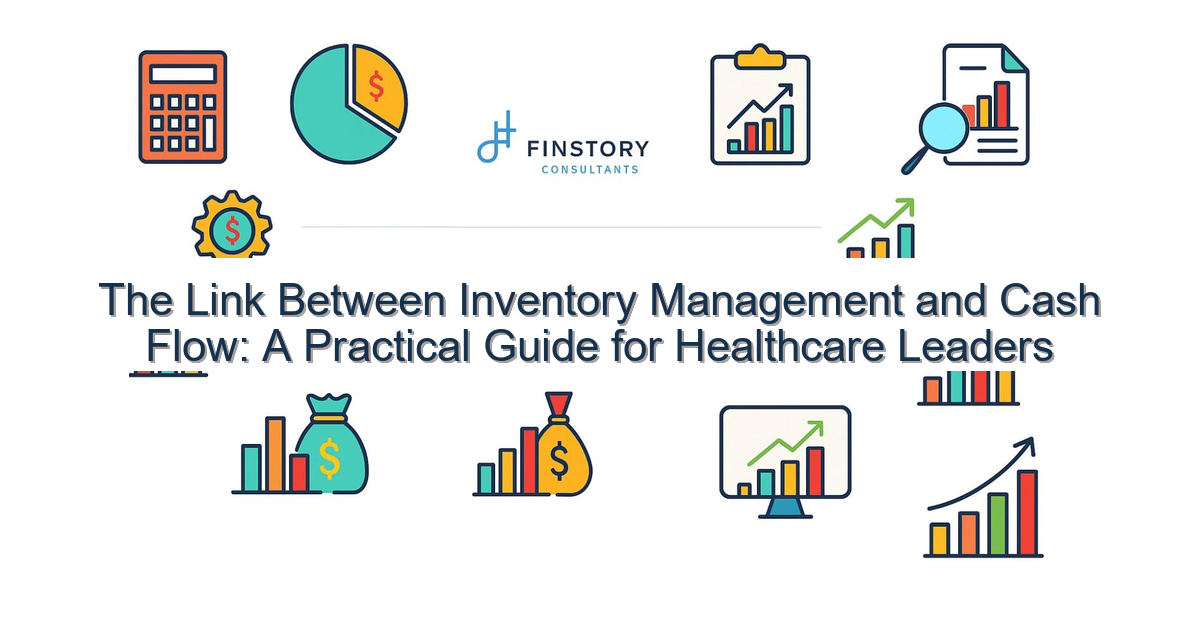The Link Between Inventory Management and Cash Flow: A Practical Guide for Healthcare Leaders
Inventory feels operational, but it talks to your treasury. You’ve inherited stockpiles, urgent clinical demands, and a finance team asking where cash is tied up—so you need a pragmatic plan that respects both patient care and the balance sheet.
Summary: By treating inventory as working capital and aligning operations, purchasing, and finance, you can free cash, reduce supply disruption risk, and give leadership reliable metrics to steer decisions.
What’s the real problem?
Healthcare organizations often accumulate inventory because clinical safety, procurement practices, and siloed information push teams toward overstocking. That excess inventory is invisible working capital: it earns no return, clutters storage, and masks inefficiencies.
- Supplies sit on shelves beyond shelf-life or reorder points—yet clinicians worry about stockouts.
- Finance reports “cash constraints” while operations insist on holding safety stock.
- Inventory accuracy is low, causing emergency purchases at premium prices.
- Leadership lacks a single source of truth for inventory value and turnover.
What leaders get wrong
Leaders want quick fixes: cut orders, impose caps, or blame procurement. Those knee-jerk moves can cause shortages and erode trust with clinicians. Other common missteps:
- Using blanket par levels instead of clinical- or site-specific demand data.
- Separating finance from daily inventory decisions—missing out on cash-impact visibility.
- Ignoring cycle counts and relying on periodic physical inventories only.
- Treating expired inventory as a compliance problem only, not a cash problem.
A better approach
Treat inventory as a controllable asset. The framework below balances patient safety, lead times, and cash efficiency.
- Measure current state: build an inventory balance sheet by location, category, and age.
- Segment items: critical clinical, predictable-use, and slow-moving/obsolescent.
- Align policies: set target days of inventory by segment and care area with clinical sign-off.
- Automate replenishment: use demand signals, lead-time adjustments, and safety-stock math.
- Govern and report: dashboard for finance and ops, with monthly review and accountability.
Real-world story: A mid-sized surgical center reduced kit overstock by 40% after mapping usage by surgeon and procedure. That freed roughly $1.2M in working capital within six months, while cancellations for missing items dropped by 25% because replenishment focused on high-use kits.
Quick implementation checklist
- Run a 30-day inventory valuation by category and location this week.
- Identify top 20% SKUs that represent 80% of value and usage.
- Start weekly 10-minute cycle counts for high-value, high-turn items.
- Set provisional target days of inventory for three clinical areas (OR, ED, ICU).
- Agree safety-stock rules with clinical leads for the top 50 SKUs.
- Enable automated reorder thresholds in your inventory system for those SKUs.
- Create a simple Power BI dashboard with inventory days, age buckets, and $ tied up.
- Schedule a 30-day review with finance, procurement, and nursing leadership.
What success looks like
- Inventory accuracy: >98% for cycle-counted items.
- Days inventory outstanding (DIO): reduction by 20–40% within 6–12 months.
- Cash freed: measurable working capital improvement (example: $1M+ for mid-sized systems).
- Order lead-time variance: reduced by 30% through better forecasting and supplier collaboration.
- Emergency buys: decline by at least 25% as replenishment becomes predictable.
- Reporting cadence: weekly operational dashboard and monthly leadership pack adopted.
Risks & how to manage them
- Risk: Clinical pushback from perceived supply reductions. Mitigation: Co-design par levels with clinicians and pilot changes in low-risk areas first.
- Risk: Data gaps and inaccurate ERP records. Mitigation: Start with a focused cycle-count program and reconcile highest-value SKUs before scaling.
- Risk: Supplier lead-time disruptions. Mitigation: Build tiered safety stock, diversify suppliers for critical items, and embed lead-time buffers into replenishment rules.
Tools & data
Inventory improvement is as much about data flow as it is about policy. Practical tools include:
- Finance automation for integrated AP/PO visibility—helps link purchases to cash impact.
- Inventory or ERP systems with barcode/RFID support to improve accuracy and speed cycle counts.
- Power BI or similar for a leadership dashboard that blends inventory value, turnover, and cash position.
- Automated alerts for expiration, low-turn items, and anomalous ordering patterns.
Next steps
If you’re a CFO, controller, or operations leader, start by committing to a 90-day pilot: pick one clinical area, map inventory value, run weekly counts, and stand up a single dashboard for finance and ops. Use the pilot to quantify cash tied up and demonstrate clinical safety is preserved.
If you want expert help, Finstory partners with teams to map processes, implement controls, and build the exact dashboards leadership needs—without disrupting care. We keep it pragmatic and results-focused so you can show cash-flow improvement quickly.
Work with Finstory. If you want this done right—tailored to your operations—we’ll map the process, stand up the dashboards, and train your team. Let’s talk about your goals.
📞 Ready to take the next step?
Book a 20-min call with our experts and see how we can help your team move faster.
Prefer email or phone? Write to info@finstory.net
or call +91 44-45811170.





